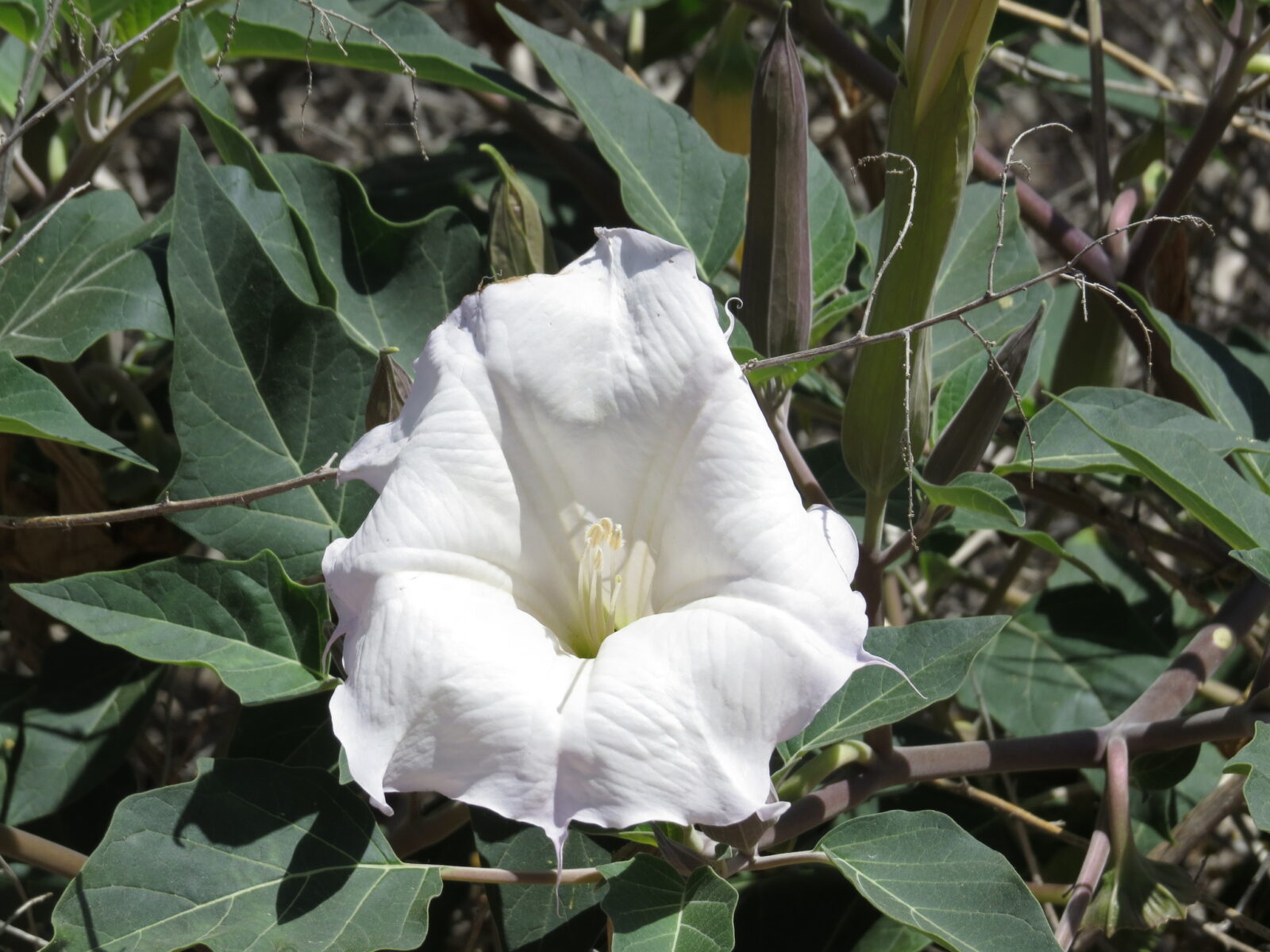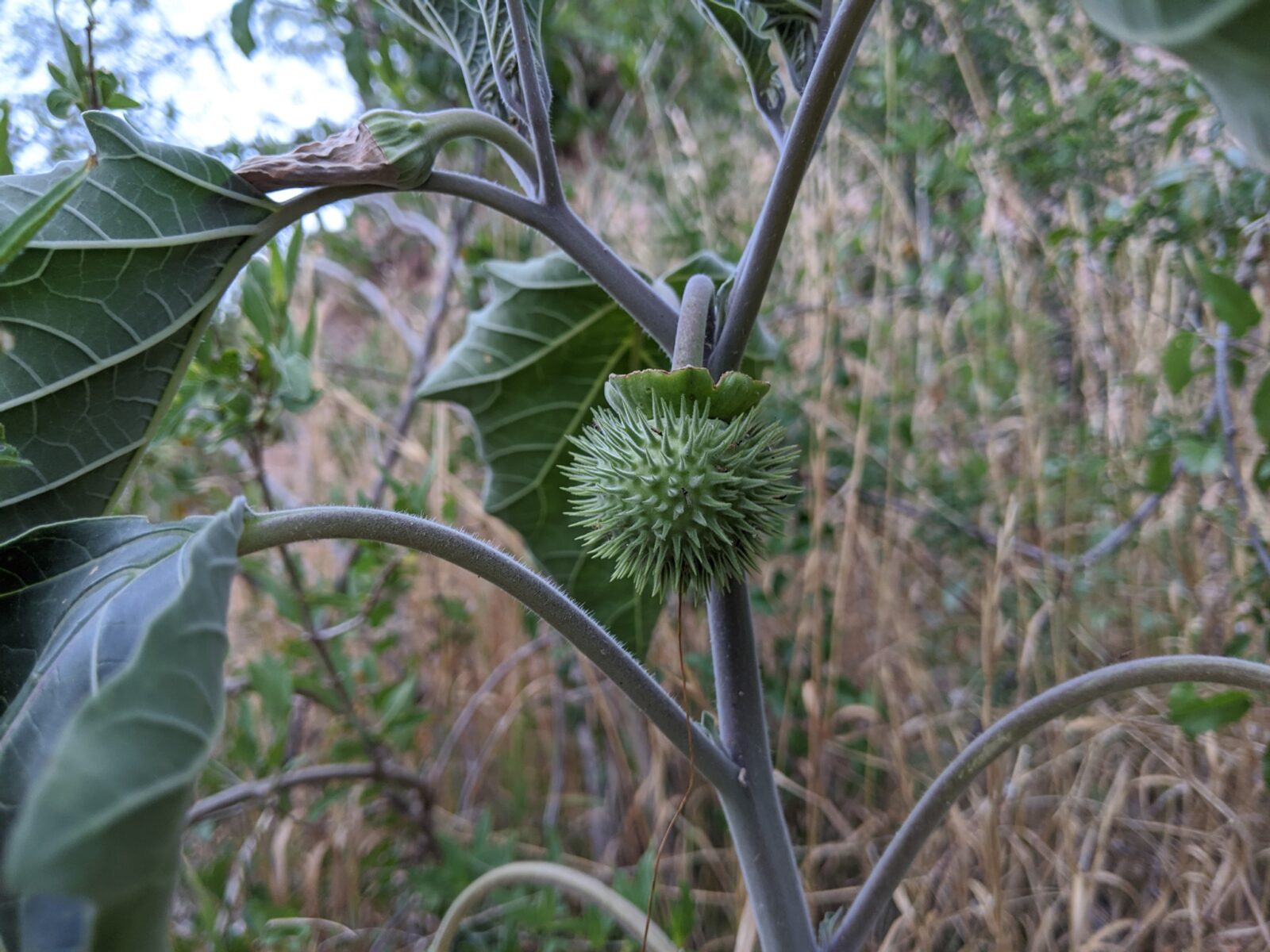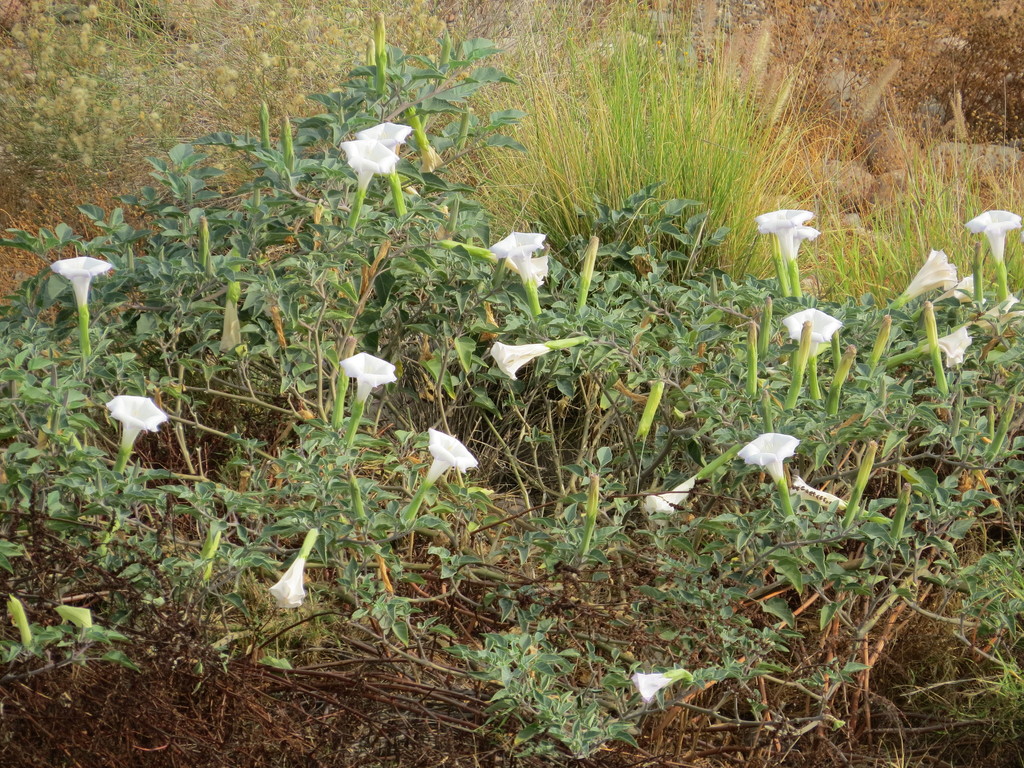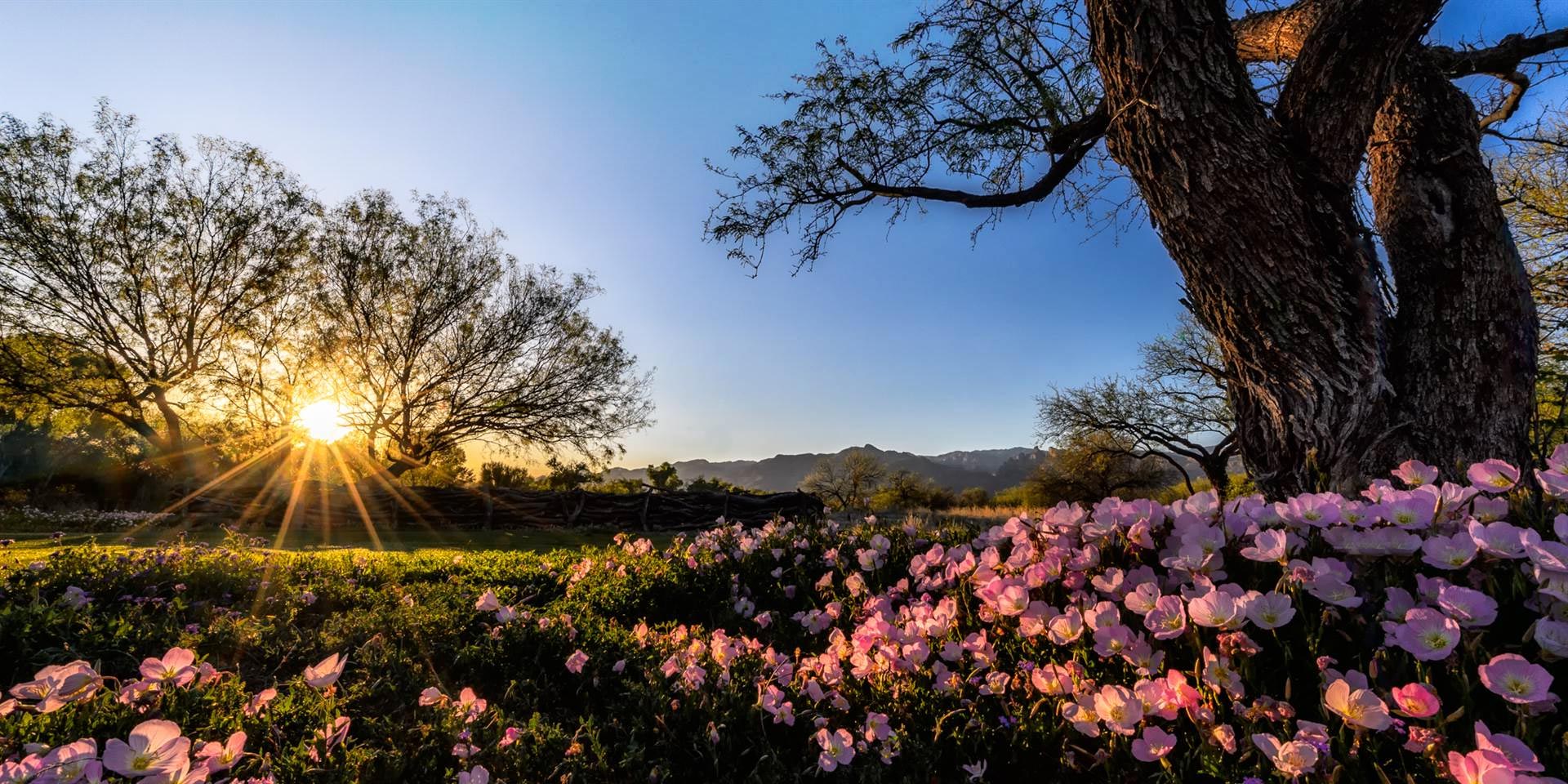Plant Profile: Sacred Datura
Posted May 09, 2021
What’s in a Name?
By Kathleen M. McCoy, Master Naturalist, AZNPS Phoenix Chapter Member
Popular literature often uses the term “Datura” for the 9-12 species in this genus interchangeably even though they are not the same plant. Datura occur widely throughout the temperate and warmer parts of both the Old and New World. In the Southwest, our local species, Datura wrightii (syn Datura meteloides), is colloquially termed Sacred datura or Sacred thorn apple.

Datura species can vary from the perennial Sacred datura, which can grow up to 3-5 feet tall and several feet wide, to the much smaller annual Moon flower (D. discolor), measuring just 18-24 inches tall. Sacred datura can be found worldwide but qualifies as native in Arizona due to its historical presence and ability to support local fauna. For example, Brown hornworm (Manduca sexta) caterpillars devour the flowers and leaves and the moths use the underside of the leaves for laying their eggs. This plant is found across Arizona between 1,000-7,000 feet elevation and typically grows in disturbed areas, often along roadsides.

Likely to catch your eye are its pretty, lily-like trumpet-shaped white flowers, which can reach up to 6 inches long and 3 inches wide. The fragrance of Sacred datura flowers is sweet, as opposed to the foul odor of its sticky, fuzzy dark green leaves when crushed. Variations in leaf and flower colors or sizes result from different growing, lighting, and moisture conditions.
The flowers produce a small round melon-like fruit covered with spikes which has inspired another common name, “thorn apple.” When dry, the fruit pod pops open to disperse the seeds which sprout easily, fresh or dried, and grow vigorously requiring little to no water. Although excessive cold can cause foliage to die back, the plant’s large tuberous roots will be ready to provide new growth once conditions are more favorable.

Sacred datura, a member of the potato (Solanaceae) family, is also called deadly nightshade for good reason. All parts of the plant, especially the seeds, contain dangerous levels of anticholinergic tropane alkaloids. However, concentrations of active chemicals vary widely in different parts of the plant.
When ingested by animals, including humans, it can be fatal. Toxic elements affect the autonomic nervous system and can result in blindness, lethargy, sweating, and dry mouth. Survivors typically have significant damage to lungs, stomach, intestines, kidneys, and/or heart which may be coupled with mental impairment.
Even though this plant is the most poisonous narcotic known, archeological evidence shows that Sacred datura has been used by humans in the Southwest for at least 3,000 years. In lesser doses, it is a hallucinogen used to boost sensory perceptions, thought processes, and energy levels. All species of Datura have been revered as sacred visionary plants by Shamans and many cultures worldwide.

Sources:
Colorado State University. (n.d.) Guide to poisonous plants. https://csuvth.colostate.edu/poisonous_plants/Plants/Details/8
DesertPlants.org. (n.d.) Sacred datura (Datura wrightii). https://www.desertplants.org/?page_id=239
DuHamel, J. (2015). Sacred datura – pretty, poisonous, and hallucinogenic. http://arizonadailyindependent.com/2015/05/03/sacred-datura-pretty-poisonous-and-hallucinogenic/
SEINet. (2021). Datura wrightii. https://swbiodiversity.org/seinet/taxa/index.php?taxon=Datura+wrightii&formsubmit=Search+Terms#
Tallamy, D. W. (2009). Bringing Nature Home: How You Can Sustain Wildlife with Native Plants. Portland, OR: Timberpress.
US Forest Service. (n.d.) The powerful Solanaceae: Datura. https://www.fs.fed.us/wildflowers/ethnobotany/Mind_and_Spirit/datura.shtml

